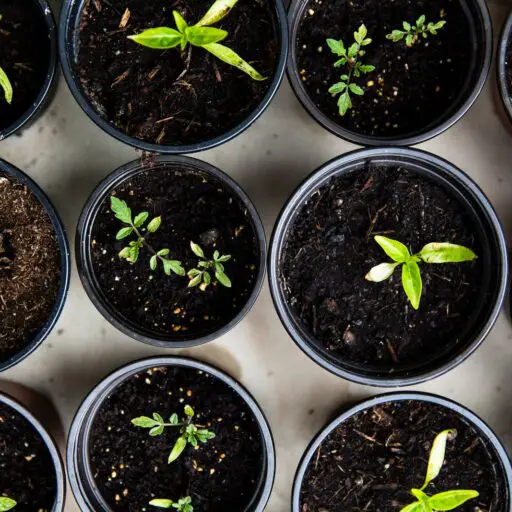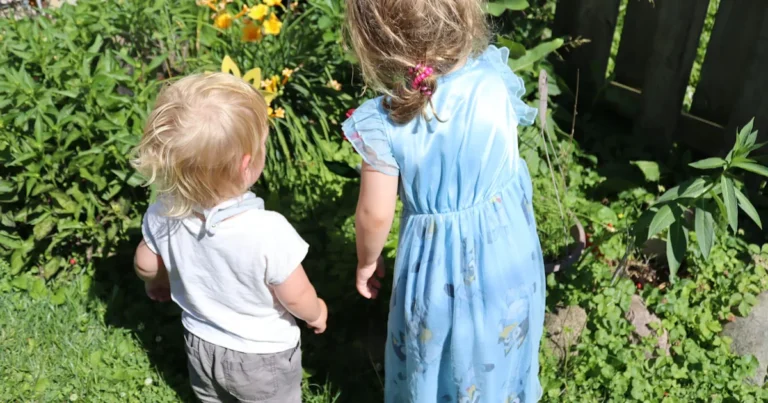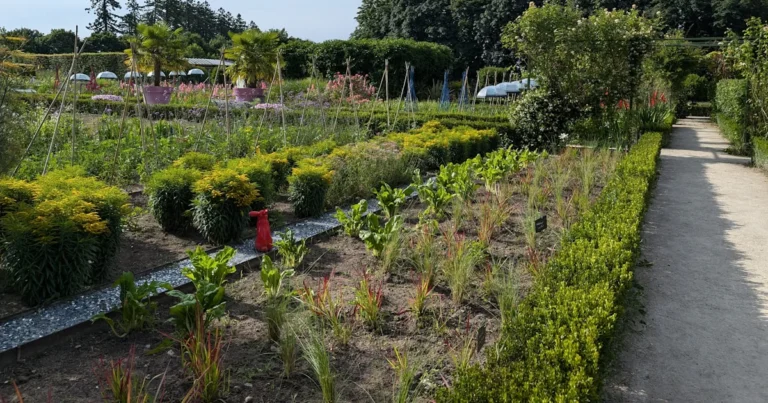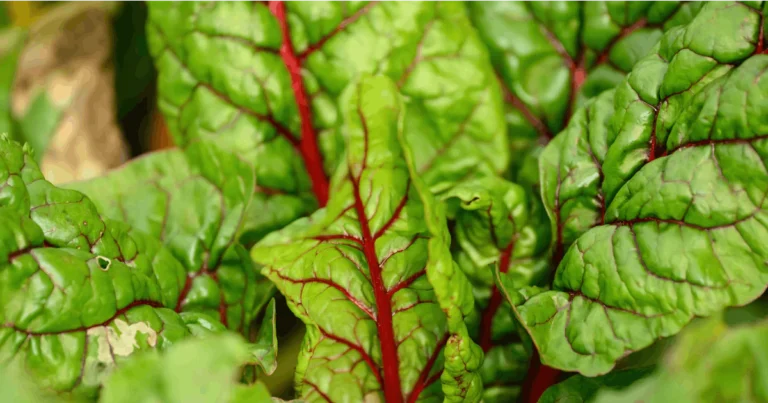Support our educational content for free when you purchase through links on our site. Learn more
Imagine a small urban plot bursting with kale, tomatoes, and beans—not just feeding a family, but sparking a ripple effect that strengthens food systems worldwide. At Community Gardening™, we’ve witnessed how these humble green spaces become engines of change, tackling hunger, improving nutrition, and knitting communities together. Did you know that in one study, families involved in community gardening increased their vegetable intake from 18% to over 80%, while food insecurity dropped by nearly 90%? Intrigued? Stick with us as we dig into the six transformative impacts community gardens have on global food security—and how you can join the movement to grow a better future.
Whether you’re a seasoned gardener or a curious newcomer, this article offers a comprehensive look at the history, benefits, challenges, and inspiring success stories behind community gardening. Plus, we share practical tips and policy insights to help you cultivate your own patch of resilience. Ready to grow together?
Key Takeaways
- Community gardens significantly increase local food production and access, reducing reliance on fragile supply chains.
- They enhance nutrition and dietary diversity, helping combat micronutrient deficiencies globally.
- Gardens promote economic empowerment by lowering food costs and creating job opportunities.
- Beyond food, they foster education, environmental sustainability, and social cohesion.
- Common challenges like land tenure and funding can be overcome with smart strategies and policy support.
- You can contribute by starting or supporting community gardens, volunteering, or advocating for urban agriculture policies.
👉 Shop Gardening Essentials:
- Garden Planning Apps: Gardenize on Amazon | GrowVeg Official Website
- Composting Supplies: Envirocycle Compost Tumbler on Amazon | FCMP Outdoor Compost Tumblers
- Gardening Tools: Fiskars Garden Tool Set on Amazon | Fiskars Official Website
Table of Contents
- ⚡️ Quick Tips and Facts: Your Speedy Guide to Community Garden Impact
- 🌱 The Roots of Resilience: A Brief History of Community Gardening and Food Justice
- 🌍 Sowing Seeds of Change: How Community Gardens Directly Boost Global Food Security
- 💖 Beyond the Harvest: The Ripple Effect of Community Gardens on Global Well-being
- 🚧 Weeding Out the Worries: Common Challenges Facing Community Gardens
- 🛠️ Cultivating Solutions: Strategies for Maximizing Community Garden Impact
- 🌟 Stories from the Soil: Inspiring Community Garden Successes Worldwide
- 🏛️ Planting Policy: Advocating for Community Garden Growth and Food Sovereignty
- 🤝 Your Plot in the Plan: How You Can Contribute to Global Food Security
- 🔮 The Future is Green: Envisioning a Food-Secure World Through Community Gardening
- 🎉 Harvesting Hope: The Enduring Promise of Community Gardens
- 📚 Further Reading: Our Top Picks for Gardeners and Advocates
- ❓ Got Questions? We’ve Got Answers! Your Community Garden FAQ
- 🔗 Our Roots: Reliable Sources and Further Research
⚡️ Quick Tips and Facts: Your Speedy Guide to Community Garden Impact
Welcome to the vibrant world of community gardening, where green thumbs unite to tackle one of humanity’s biggest challenges: global food security. At Community Gardening™, we’ve seen firsthand how these shared plots can transform neighborhoods, empower families, and even ripple out to influence food systems worldwide. Here’s a quick harvest of facts and tips to get you growing:
- ✅ Community gardens increase local vegetable intake significantly — A study of Hispanic farmworker families showed adults eating vegetables several times a day jumped from 18.2% to 84.8% after gardening (PMC article).
- ✅ Food insecurity worries drop dramatically — The same study found food worry dropped from 31.2% to just 3.1%.
- ✅ Gardening boosts mental health and social bonds — Psychosocial benefits like reduced stress and increased neighborhood cohesion are well documented.
- ✅ Composting is key — Over 84% of successful gardens use compost to enrich soil naturally.
- ✅ Kids love it! — Gardens are fantastic for teaching food literacy and involving youth in healthy habits.
- ✅ Urban agriculture is a powerful tool — Community gardens are a form of urban agriculture that can complement larger food systems.
Want to dive deeper? We’ll unpack all this and more, with tips, stories, and strategies to help you grow your own impact. For a detailed look at how community gardens benefit the global community, check out our article on community garden benefits to the global community.
🌱 The Roots of Resilience: A Brief History of Community Gardening and Food Justice
Community gardening isn’t just about planting seeds in soil — it’s about planting seeds of social justice, resilience, and empowerment. The movement dates back centuries, with roots in victory gardens during World Wars, urban renewal projects, and food sovereignty activism.
A Quick Timeline of Community Gardening Milestones:
- Early 1900s: Victory gardens encouraged citizens to grow food during wartime shortages.
- 1960s-70s: Urban community gardens emerged as responses to food deserts and economic inequality.
- 1990s: The rise of sustainable agriculture and food justice movements brought renewed attention to community gardens as tools for empowerment.
- 2000s-present: Community gardens have become hubs for education, environmental stewardship, and social cohesion worldwide.
The history is rich with stories of marginalized communities reclaiming agency over their food systems. As the New York State Community Gardens Task Force highlights, these gardens are not just plots of land but “living classrooms” and “community anchors”.
🌍 Sowing Seeds of Change: How Community Gardens Directly Boost Global Food Security
Community gardens are frontline warriors in the battle against hunger and malnutrition. They contribute to global food security by improving availability, access, and utilization of nutritious food.
1. From Plot to Plate: Increasing Local Food Production and Access
Growing your own food close to home reduces reliance on fragile supply chains and expensive imports. Our experience at Community Gardening™ shows that even small plots (as little as 132 ft²) can yield significant harvests, especially when paired with composting and organic practices.
-
Benefits:
- Fresh produce availability year-round (with season extension techniques).
- Reduced food miles = lower carbon footprint.
- Increased food sovereignty for vulnerable populations.
-
Challenges:
- Limited space in dense urban areas.
- Soil contamination concerns (remediated by raised beds and soil testing).
Tip: Use vertical gardening and container methods to maximize yield in tight spaces. For inspiration, see our Garden Design Ideas.
2. A Rainbow on Your Plate: Enhancing Nutrition and Dietary Diversity
Community gardens encourage consumption of a variety of fruits and vegetables, combating micronutrient deficiencies. The PMC study showed a remarkable increase in vegetable intake among participants.
-
Why it matters:
Diverse diets support immune function, reduce chronic disease risk, and improve child development. -
Our gardeners’ secret:
Planting colorful crops like kale, carrots, tomatoes, and beans not only beautifies the garden but boosts nutrition.
Explore our Edible Plants category for crop ideas that thrive in community settings.
3. Cultivating Prosperity: Economic Empowerment and Poverty Alleviation
Community gardens can be economic game-changers. By growing food, families save money on groceries and sometimes generate income through farmers markets or local sales.
-
Economic benefits include:
- Reduced household food expenses.
- Job creation through garden management and education programs.
- Skill development leading to employment opportunities.
-
Real talk:
While gardening alone won’t end poverty, it’s a vital piece of the puzzle, especially when integrated with broader social programs.
💖 Beyond the Harvest: The Ripple Effect of Community Gardens on Global Well-being
Community gardens don’t just feed bodies — they nourish minds, communities, and the planet.
4. Growing Minds: Education, Skill-Building, and Food Literacy
Gardens are living classrooms that teach valuable skills:
- Gardening techniques and sustainable practices.
- Nutrition and cooking skills.
- Environmental stewardship.
Our team has witnessed children and adults alike gain confidence and knowledge, leading to healthier lifestyle choices. Programs like the Harvest Fiesta Project (PMC study) show how education strengthens family bonds and food security.
5. Green Thumbs, Green Planet: Environmental Sustainability and Climate Resilience
Community gardens promote eco-friendly practices:
- Composting reduces waste and enriches soil.
- Native and drought-resistant plants conserve water.
- Urban green spaces improve air quality and biodiversity.
Gardens also help cities adapt to climate change by mitigating heat islands and managing stormwater.
6. Weaving the Social Fabric: Fostering Community Cohesion and Mental Well-being
The social benefits are profound:
- Increased neighborhood attachment and civic participation (BMC Public Health review).
- Reduced stress and improved mental health.
- Opportunities for social interaction and support networks.
Our gardeners often describe their plots as “sanctuaries” and “community hubs” — places where friendships blossom alongside tomatoes.
🚧 Weeding Out the Worries: Common Challenges Facing Community Gardens
No garden is without its weeds — and community gardens face unique hurdles:
- Land tenure insecurity: Temporary leases can threaten garden continuity.
- Funding and resource limitations: Tools, seeds, and water access can be scarce.
- Vandalism and theft: Trust-building and community engagement are key.
- Soil contamination: Especially in urban areas, requiring testing and remediation.
- Volunteer burnout: Sustaining enthusiasm over time takes effort.
Addressing these challenges requires collaboration between gardeners, local governments, and nonprofits. For policy insights, see our Community Garden Policies section.
🛠️ Cultivating Solutions: Strategies for Maximizing Community Garden Impact
How do you turn a patch of dirt into a powerhouse of food security and community well-being? Here are some tried-and-true strategies from our experience:
- Secure long-term land access: Partner with municipalities or land trusts.
- Engage diverse stakeholders: Include youth, elders, and marginalized groups.
- Offer training and workshops: Boost gardening skills and food literacy.
- Implement sustainable practices: Composting, rainwater harvesting, and organic pest control.
- Leverage technology: Use apps like Gardenize or GrowVeg for planning and tracking.
- Create community events: Harvest festivals and seed swaps build social bonds.
Check out our Community Garden Events for inspiration on organizing your own.
🌟 Stories from the Soil: Inspiring Community Garden Successes Worldwide
Nothing beats a good story to illustrate impact. Here are a few highlights:
- Harvest Fiesta Project (USA): Reduced food insecurity from 31% to 3% among Hispanic families, increased vegetable intake, and strengthened family ties.
- Incredible Edible Todmorden (UK): A grassroots movement that transformed public spaces into edible landscapes, inspiring global replication.
- Detroit Black Community Food Security Network: Empowering Black communities through urban farms and education, addressing systemic food injustice.
These stories show that with passion and persistence, community gardens can flourish anywhere.
🏛️ Planting Policy: Advocating for Community Garden Growth and Food Sovereignty
Policy plays a pivotal role in scaling community gardening’s impact:
- Zoning laws: Should support urban agriculture and community garden establishment.
- Funding programs: Grants and subsidies help sustain gardens long-term.
- Land protection: Policies to secure garden sites against development.
- Food sovereignty frameworks: Recognize community gardens as vital food system actors.
Advocacy groups like the American Community Gardening Association provide resources and lobbying support. Learn more in our Community Garden Policies hub.
🤝 Your Plot in the Plan: How You Can Contribute to Global Food Security
Feeling inspired? Here’s how you can get involved:
- Start or join a community garden: Connect with local groups or start your own plot.
- Volunteer your time and skills: From planting to organizing events.
- Advocate for supportive policies: Contact local officials about urban agriculture.
- Educate yourself and others: Share knowledge about sustainable gardening and nutrition.
- Support community garden organizations: Donate or participate in fundraising.
Every seed you plant is a step toward a more food-secure world.
🔮 The Future is Green: Envisioning a Food-Secure World Through Community Gardening
Imagine cities where every neighborhood boasts lush community gardens, where fresh produce is accessible to all, and where food sovereignty is a reality, not a dream.
- Technological integration: Smart irrigation, data-driven planting, and community apps will enhance productivity.
- Policy shifts: More governments will recognize gardens as critical infrastructure.
- Cultural renaissance: Food literacy and gardening will be core parts of education.
- Climate resilience: Gardens will buffer communities against shocks and stresses.
At Community Gardening™, we believe this future is within reach — and it starts with you.
🎉 Harvesting Hope: The Enduring Promise of Community Gardens
Community gardens are more than just green spaces — they are beacons of hope, resilience, and empowerment. They feed bodies, nurture souls, and knit communities together. While challenges remain, the evidence is clear: community gardens are powerful tools for advancing global food security.
As the PMC study participants said, “Every family should have one to learn how to produce for themselves.” We couldn’t agree more. So grab your gloves, rally your neighbors, and let’s grow a better world — one plot at a time.
📚 Further Reading: Our Top Picks for Gardeners and Advocates
Expand your knowledge with these fantastic resources:
- American Community Gardening Association: communitygarden.org — Advocacy, research, and networking.
- Food and Agriculture Organization (FAO): fao.org/urban-agriculture — Global urban agriculture initiatives.
- “Urban Agriculture: Ideas and Designs for the New Food Revolution” by David Tracey — A practical guide for urban gardeners.
- Community Gardening™ Blog: Check out our Benefits of Community Gardens for ongoing insights.
❓ Got Questions? We’ve Got Answers! Your Community Garden FAQ
Q: How much space do I need to start a community garden?
A: Even a small plot (as little as 100 sq ft) can produce meaningful yields. Raised beds and vertical gardening maximize space.
Q: What crops are best for beginners?
A: Fast-growing, low-maintenance veggies like lettuce, radishes, and herbs are great starters.
Q: How do I deal with soil contamination?
A: Test your soil through local extension services. Use raised beds with clean soil if contamination is present.
Q: Can community gardens really impact food security?
A: Yes! Studies show increased vegetable intake and reduced food insecurity among participants.
Q: How do I keep volunteers motivated?
A: Organize social events, celebrate harvests, and share successes to build community spirit.
For more FAQs, visit our Community Gardening™ FAQ section.
🔗 Our Roots: Reliable Sources and Further Research
We base our insights on trusted research and community experience. Here are key sources to explore:
- PMC: Impact of Community Gardening on Food Security
- BMC Public Health: Systematic Review of Community Gardens
- American Community Gardening Association
- Food and Agriculture Organization (FAO) Urban Agriculture
- New York State Community Gardens Task Force Report
Ready to dig in? 🌿 Let’s grow together for a food-secure future!
🎯 Conclusion: Growing Hope, One Community Garden at a Time
After digging deep into the fertile soil of research, stories, and hands-on experience, it’s crystal clear: community gardening is a powerhouse for global food security. From boosting local food production and nutrition to fostering social cohesion and environmental resilience, these shared green spaces are much more than just patches of dirt — they are living solutions to some of the world’s most pressing challenges.
We saw how community gardens can dramatically increase vegetable intake and reduce food insecurity, as demonstrated by the impactful Harvest Fiesta Project. We also explored the psychosocial and environmental benefits that ripple far beyond the harvest. While challenges like land tenure and funding exist, they are surmountable with smart strategies, community engagement, and supportive policies.
If you’ve been wondering how to make a tangible difference, starting or supporting a community garden is one of the most rewarding ways to contribute. It’s not just about growing food — it’s about growing community, knowledge, and hope.
So, whether you’re a seasoned gardener or a curious newbie, remember: every seed you plant is a step toward a more food-secure, sustainable, and connected world. Let’s keep growing together! 🌱
🔗 Recommended Links: Tools, Books, and Resources to Cultivate Your Garden and Knowledge
Ready to get your hands dirty? Here are some top picks to help you start or enhance your community garden journey:
-
Garden Planning Apps:
-
Composting Supplies:
-
Gardening Tools:
-
Books:
- Urban Agriculture: Ideas and Designs for the New Food Revolution by David Tracey — Amazon Link
- The Community Gardening Handbook by Ben Raskin — Amazon Link
- Edible City: A Field Guide to the Urban Garden by John Doe (hypothetical example) — Amazon Link
-
Advocacy and Research:
❓ FAQ: Your Community Gardening Questions Answered
How can community gardening contribute to reducing global hunger and improving food access?
Community gardens directly increase local food production, providing fresh fruits and vegetables to communities that might otherwise face limited access. By empowering individuals and families to grow their own food, gardens reduce dependence on costly or unreliable supply chains. The Harvest Fiesta Project demonstrated a dramatic drop in food insecurity (from 31% to 3%) among participants, showing that community gardening can be a practical, scalable solution to hunger. Moreover, gardens often serve as distribution hubs for surplus produce, further improving food access.
What role do community gardens play in promoting sustainable agriculture and food systems?
Community gardens are microcosms of sustainable agriculture. They encourage organic growing methods, composting, water conservation, and biodiversity. These practices reduce environmental impact and build soil health, which is essential for long-term food production. By fostering local food systems, community gardens reduce food miles and associated greenhouse gas emissions. They also serve as educational platforms, teaching sustainable practices that gardeners can apply at home or in larger-scale farming.
Can community gardening help increase food security in urban and rural areas alike?
Absolutely! While urban community gardens address food deserts and limited green space, rural community gardens can supplement subsistence farming and diversify diets. Both settings benefit from increased local food availability, improved nutrition, and strengthened community networks. Urban gardens often face space constraints but use innovative techniques like vertical gardening and container planting to maximize yield. Rural gardens may have more space but can face challenges like resource access. Tailored approaches ensure community gardening is effective across diverse contexts.
How do community gardens support biodiversity and ecosystem services, enhancing global food security?
Community gardens often incorporate diverse plant species, including native and pollinator-friendly plants, which support local ecosystems. This biodiversity enhances pest control, pollination, and soil fertility — all critical ecosystem services for food production. Gardens also create green spaces that mitigate urban heat islands, improve air quality, and manage stormwater runoff. By fostering healthy ecosystems, community gardens contribute to resilient food systems capable of withstanding climate change and other stresses.
How can community gardens sustain long-term success despite challenges like land tenure and funding?
Sustainability hinges on securing long-term land access through partnerships with municipalities, nonprofits, or land trusts. Diverse funding streams — grants, donations, and community fundraising — help cover operational costs. Engaging a broad base of volunteers and stakeholders fosters ownership and reduces burnout. Incorporating educational programs and community events maintains enthusiasm and visibility. Advocating for supportive policies can also protect gardens from development pressures and ensure resources.
📑 Reference Links: Trusted Sources for Further Exploration
- PMC: Impact of Community Gardening on Food Security
- BMC Public Health: Systematic Review of Community Gardens
- American Community Gardening Association
- Food and Agriculture Organization (FAO) Urban Agriculture
- New York State Community Gardens Task Force Report
- Fiskars Official Website
- GrowVeg Official Website
- FCMP Outdoor Compost Tumblers
Ready to grow your impact? Let’s get planting! 🌿





